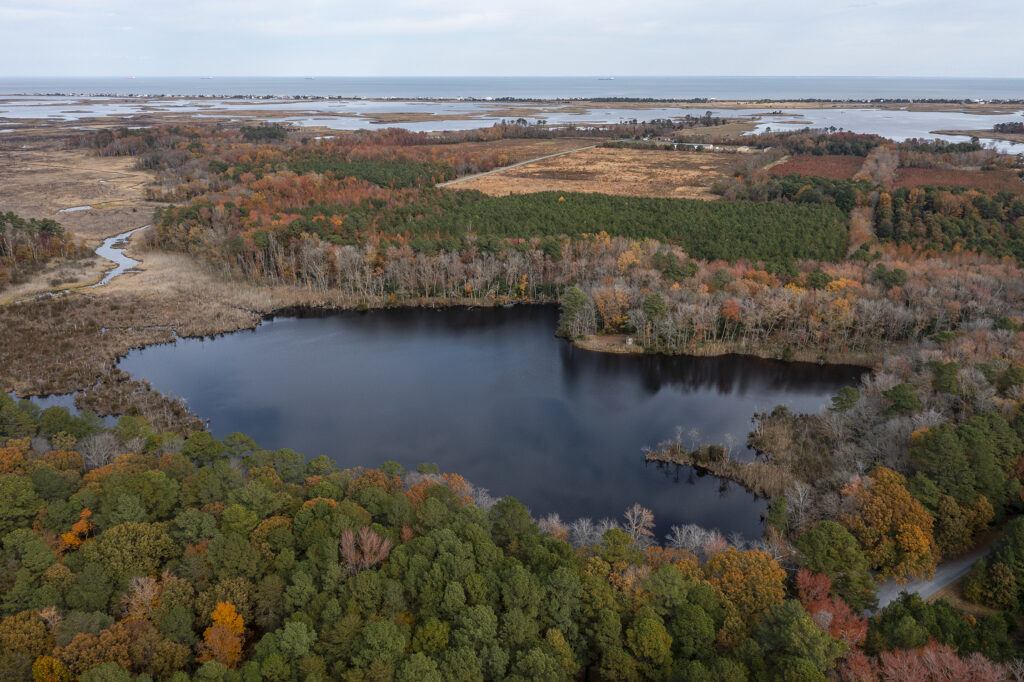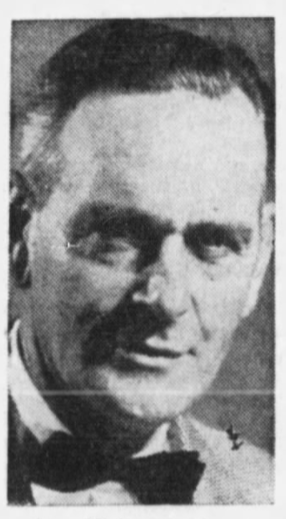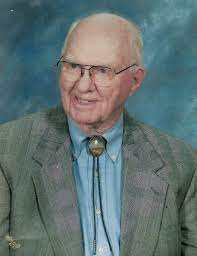I can’t remember who first told me about Milton people using the work “turkle” in place of “turtle.” I allowed myself to be persuaded that “turkle” is a word unique to Milton dialect, if there really is such a thing as a Milton dialect.
Today, I’d like to set the record straight (at least in my head): “Turkle” was not invented in Milton. It is listed in Webster’s Revised Unabridged Dictionary as an alteration of “turtle” in American regional speech. Mark Twain used it in Huckleberry Finn, and it has seen use in other works of fiction when characters speak in dialect. It also appears in the autobiographical A Narrative of the Life of Davy Crockett, published in 1834, in this line: “I knew my father’s nature so well, that I was certain his anger would hang on to him like a turkle does to a fisherman’s toe…”
Locally, the word can be seen in two places (that I know of) within Milton. One is Turkle Pond Road, off Route 16 east of SR1 leading into the Prime Hook National Wildlife Refuge. The other is Turkle Pond within the refuge. I decided to take a closer look at Turkle Pond.



If this pond is named because its shape resembles a turt.. excuse me, turkle, then that requires quite a stretch of imagination to visualize, just like the ancients visualized bulls, twins, and hunters in the stars.
This was not by any means my first visit to the Prime Hook NWR, but I now thought I’d like to learn more about its history. It is, after all, in the Milton orbit.
The name Prime Hook is a corruption of the Dutch Priume Hoek, meaning “Plum Point,” a name Dutch settlers in the 17th century gave it for the area’s abundance of purple beach plums. The other notable NWR in Delaware, Bombay Hook, gets its name from another anglophone corruption, this time of the Dutch “Bompies Hoek,” or “little tree point,” a name attributed to the preponderance of scrub pine and thickets there.
The brochures and on line information about Prime Hook NWR all state that it was established in 1963, which would imply that it materialized at the stroke of a bureaucrat’s pen. The actual story of how Prime Hook NWR came to be is a lot more complicated.
Prime Hook’s older sister, Bombay Hook NWR, was established in 1935 to hold back the wave of industrialization of the Delaware Bay shoreline; the destruction of waterfowl habitat had already led to the great diminishment of their number. The proposal to set aside about 12,000 acres at the present site of Prime Hook was brought forward by the Fish and Wildlife Service of the Department of the Interior for the same reason: the imminent threat of draining of wetlands and their development for expanded agriculture, industrial or residential use. The hunting of ducks and geese, a traditional sport that enjoyed great popularity in Delaware and brought considerable revenue to the state, was not sustainable without the preservation of waterfowl habitat.
In 1962 Prime Hook contained some of the finest wetlands in the state. All of it was in private hands, about 83 property owners in total, with some families having held title to their property since the 17th century. In the 1950’s the Delaware Fish and Wildlife Commission, highly respected professionals who were very good at their job, tried to get the Prime Hook property owners to cooperate among themselves in the management of water levels in the wetlands to balance the needs of agriculture and waterfowl habitat conservation. This effort proved to be unsuccessful.
In August of 1962 the Department of the Interior approved a proposal to purchase about 12,000 acres of privately held land in Prime Hook to form another waterfowl refuge supplementing Bombay Hook NWR. This proposal had the unqualified support of the Delaware Fish and Wildlife Commission as well as Delaware’s Governor, Elbert Carvel. It was hoped at the time that the land could be purchased through negotiation without resort to eminent domain.
The rumblings began almost immediately among the landowners within the proposed boundaries of the NWR and the area immediately surrounding it.

On February 20, 1963, James W. Carr of the Real Estate department of the Fish and Wildlife Service laid out the case for Prime Hook NWR in the Wilmington Evening News Journal. His case was built on conservation principles: the need to preserve habitat and defend against pollution and industrialization, forces that were exerting pressure on existing marshland everywhere. The Delaware Fish and Game Commission threw their support behind the proposal as well.
What Carr did not address at all were the property owners’ main objections: fear of inadequate compensation for land their families had owned for many generations, uncertainty as to how water levels would be maintained in the NWR so as not to adversely affect neighboring farmland, and the cutting off of access to the refuge by the public once the acquisitions had been completed. Underlying all of this was a visceral reaction against the federal government of hundreds or thousands of acres, quite possibly by eminent domain.

Not all of the property owners in Prime Hook were opposed to selling out, but there were enough of them with political influence to turn legislators against the project, especially in the state Senate. State Senator Walter J. Hoey characterized the proposed NWR as a “federal land grab” and “communism and socialism in action” — incendiary statements at the height of the Cold War. Governor Carvel, who had supported the project the previous year, now did an about-face; in a letter to President Kennedy he asserted that the Department of the Interior had not made their case, and asked for the withdrawal of the project.

The rhetoric escalated. Five Prime Hook landowners led by Houston Wilson expressed their objections to the press in a hastily convened meeting in Smyrna on March 20, 1963; this was a meeting to which no representatives of the Department of the Interior were invited, and thus no opportunity provided for them to respond to the objections. Two concerns had serious merit. One was the removal of property from county tax rolls once the land was acquired by the Federal government; this tax revenue supported the counties’ school systems. The other was the removal of 5.5 miles of beach on Delaware Bay from public access once it was absorbed into the Prime Hook NWR. Subsequent actions by Congress and the Department of the Interior would render these objections moot, but that would not happen until months later.
The other objections were less rational and fueled by anxiety and anger. Houston Wilson was quoted as saying “[Prime Hook NWR] will be encircled by barbed wire, you won’t get into it without a pass and you will be told when to leave and where to go.” Owners of property adjacent to the proposed NWR feared condemnation of their property as well. One woman said several of her neighbors were threatened by James W. Carr. Wilson ultimately accused the Federal government of not dealing openly and honestly with landowners.

On March 25, Houston Wilson and his posse asked for a meeting with the Delaware Fish and Wildlife Commission to get them to reverse their support of the Prime Hook proposal in the hope of killing it. The 3-man Commission, led by Norman G. Wilder, refused to change their position, and Wilder would endure many vitriolic personal attacks for his stand. As a consequence, the Democrat-controlled State Senate became incensed at the Commission for not bowing to political pressure. Senator Hoey drafted Senate Bill 150 for the purpose of adding 4 additional members to the Commission, in effect packing it with political appointees who would do as they were told: remove Wilder and kill the Prime Hook NWR.
SB 150 was passed by the State Senate but was voted down in the House later that year. On June 27, President Kennedy, in a reply to Governor Carvel, politely but firmly asked him to withdraw his objections to the Prime Hook proposal. Meanwhile, the Department of the Interior addressed one of the objections to the plan: fear that 5.5 miles of beachfront would become unavailable to the public if it were included in the NWR. On July 15, they announced that Slaughter Beach, Prime Hook Beach, and Broadkill Beach, all privately developed, would be excluded from, and undeveloped Fowler Beach, to the north of Slaughter Beach, would remain part of the NWR.
By July of 1963, the Department of the Interior had begun acquiring tracts at Prime Hook from those landowners amenable to selling. The Department had excluded some additional acreage from the acquisition plan, but by 1968 only a fraction of the Prime Hook tracts had been acquired through negotiated buyouts. It was at that point that condemnation proceedings began on the remaining tracts. Still, by 1974, only 5,000 acres of the 11,000 had been secured; the rest would continue to be acquired through condemnation proceedings for years to come.
As of this writing, I still have not determined the year that the final tracts were acquired, but I am continuing the inquiry. With the benefit of hindsight, it seems that the Federal government did a poor job of communicating with Delaware legislators, the governor, and the general public regarding how their concerns would be addressed and how the project’s benefits would more than offset the drawbacks. In spite of the poor public relations effort, most of the people of Delaware were in support of the Prime Hook NWR. It is probably wishful thinking, however, that the most intransigent landowners would have ever come around to support the it.
Today, the Prime Hook NWR is enjoyed year-round by birders, strollers, and hunters (in season), and is home to numerous species of waterfowl, birds, mammals, amphibians and reptiles. Lost tax revenue has been more than offset by funds from the Fish and Wildlife Service revenue pool. Wilder, the vilified leader of the Delaware Fish and Wildlife Commission, continued a long career in state service in various wildlife and conservation management roles. Among the players in the drama of 1963, only he is commemorated: the Norman G. Wilder Wildlife Area in Kent County bears his name.
Sources
Wilmington News Journal, 1962 – 1978
Wilmington Evening News Journal, 1962 – 1978
Wilmington Morning News, 1962 – 1978
Obituary of Norman G. Wilder https://www.delawareonline.com/obituaries/wnj096639
Prime Hook NWR web site https://www.fws.gov/refuge/prime_hook/

